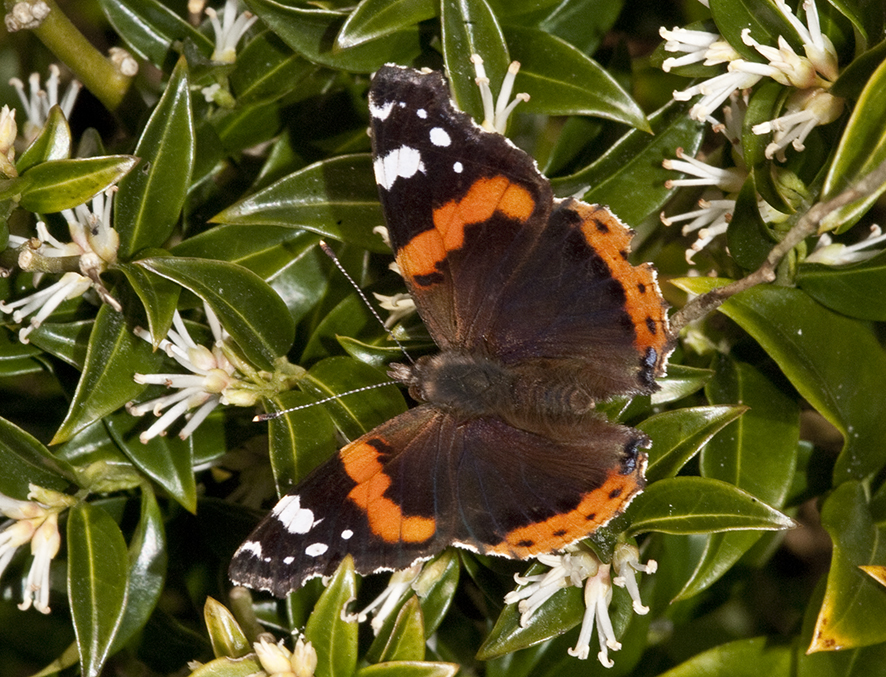The Farnham Herald has published our partner the Farnham Biodiversity Group’s latest article in the most recent issue under the above headline. The article is included here for the benefit of our members.
As winter approaches and the days get shorter and colder, the trees shed their leaves and how to survive the winter cold and food shortages becomes a pressing problem for our wildlife. The resources available in the countryside and our gardens will be insufficient to sustain most wildlife unless we supplement the food supplies. Throughout autumn those species unable to migrate have to find ways of toughing out the cold weather when there is little food about. They do this by laying down reserves of bodily fats, by stashing away stores of food, and establishing dens protected from the extremes of cold. Badgers, for example, have been stuffing their burrows with warm bedding.

The simplest strategy is to build up food reserves in the autumn and then save energy by becoming dormant through winter in a safe secluded place. A dormant animal is still active and will not survive if it uses up all its stored reserves. However, if the weather warms up even temporarily it can start foraging, so putting out supplementary food when the weather warms in winter can be a lifeline to foxes, badgers and wood mice. Growing winter flowering plants in the garden can also be highly beneficial to overwintering insects; red admiral butterflies have been seen feeding on flowers of Sarcococca (sweet box) in January. A good wildlife gardener will grow a selection of plants that is a source of nectar and pollen throughout all seasons.

Another overwintering strategy is to hibernate. Hibernation is an extreme form of dormancy and involves a closing down of nearly all physiological activity, but not the brain. Breaking hibernation requires more than just a brief warming of the weather and can involve internal clocks as well as external triggers such as increases in temperature and increasing day length. Hence hibernating animals like bats and dormice tend not to wake up during warm spells in mid-winter. Many insects can be found hibernating in our outhouses or in hollow trees in which they are sheltered from frosts. It is worth exploring some of the World War II pill boxes along the River Wey where you may be lucky enough to find, without disturbing, overwintering herald or old lady moths.
Diapause, a state of dormancy, is another physiological way that insects survive winter. During diapause all development is at a halt; this can happen at any stage of an insect’s development: egg, larva, pupa or adult. Many insects have a single generation a year and keep their life cycles synchronised with the seasonal cycle by entering diapause at one of its life-cycle stages. When digging in the garden or compost heap you may uncover a caterpillar or a chrysalis that is unresponsive. It will need to be re-buried otherwise they will either fall prey to the blackbirds or be killed by the next frost. You may also notice an absence of earthworms near the surface; this is because they have moved deep down into the soil where it is warmer.
Soil temperatures vary according to the extent of plant cover; soils in woods are warmer in winter than those on open fields. But as a rule of thumb, the soil temperature at a depth of one metre is equivalent to the average of the air temperature during the previous week, and at two metres depth it is about the average of the air temperature for the previous month. Some animals avoid getting frozen by having an antifreeze, glycol, in their bodies. Curiously, glycol is also used by animals in really dry environments to avoid their body tissues becoming dehydrated.

Badger eating nuts in snow
Climate change is causing more extreme weather conditions, which can threaten some of the means of survival used by our wildlife over winter, and thus our biodiversity. That should be the subject of a further article.
For more information on this or related subjects contact Farnham Biodiversity Partnership: contact@FarnhamBAP.org.uk, or via Facebook Farnham Biodiversity Partnership.
Photographs:
- Red admiral butterfly on Sarcocca (sweet box) in January by Martin Angel
- Sleeping dormouse handled during licensed survey by Libby Ralph
- Badger eating nuts in snow by Steve Langham
